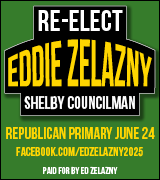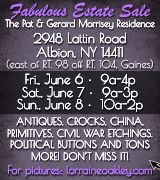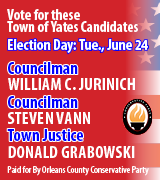The Supreme Court is about judicial philosophy, not politics
Editor:
Every one tends to think in terms of Supreme Court Justices as politically “liberal” or “conservative”. The notion is often that those labels determine how a Judge will rule on particular issues.
The truth is that so called “conservative” judges sometimes vote for so called “liberal” results and vice versa. Half of all cases are actually unanimous and split decisions do not follow a pattern.
Justice Scalia, for example, often voted against law enforcement and for defendants. (Google that if you have any doubt!) Many times they agree but for different reasons.
Since it is unethical for a Judge to say how they would rule on any particular issue the President and Senate look closely at their philosophy and hope it is a guide to what sort of decisions the nominee will make.
There are three major schools of judicial philosophy. None of them are perfect and judges frequently mix and match. Any one of them strictly applied can lead to ridiculous conclusions.
Judge Bork, a strict constructionist in the Scalia vein, wrote about this need to mix and match and also testified to the Senate about that when he was being considered for a seat on the Supreme Court.
Judicial philosophy is important because we are not a “civil law” country and do rig our judiciary. In civil law countries have comprehensive codes that regulate virtually everything in detail. As a rule of thumb in most of them when something is not specifically permitted the presumption is against the conduct.
Civil law courts hold if the code applies, but their decisions do not bind future courts. On the other hand under the “common law” countries, the common law by design is not static.
Courts consider principles of law, reasoning, and new combinations of fact(s) and law(s) all the time. The presumption is that conduct is probably permitted unless it is criminal, clearly regulated for a good and valid reason, or against “public policy” – for example, it may be against public policy to light a match in a crowded place.
Each decision binds future courts if the facts and law are the same. The bias in favor of peoples’ rights and the creep that is built into binding Judicial decisions as lubricant and stops Legislative overreaching.
An independent judiciary helps keep the system stable. Civil law countries have a harder time dealing with change – just look at France and all the various Republics it has had; England, the home of common law, dates back to 1215. (I do not mention systems in which the results are rigged; that’s typical in Banana Republics and Dictatorships which are inherently unstable.)
Justice Scalia tended, philosophically, to rely on “Textualizm.” He looked at the words and then tried to figure out what was, or would have been, in the writers’ minds at the time laws were written. This is an off shoot of the British School of “Legal Positivism” which is fairly recent – H.L. A. Hart “Concept of Law” 1948.
The shortcoming of this tool is that knowing what a person 200 years ago would feel about a problem they had never considered involves a lot of guess work and a Judge’s personal values. Another criticism is that is tends to push decisions with Constitutional dimensions onto the Legislatures which are supposed to be limited to passing statues.
The traditional American approach is called “Moral Reading”. Justice Kennedy, the swing Justice nowadays, looks at the words, looks at contemporaneous statements of what the writers intended, and when in doubt or confronted by answers that do not add up considers the principles stated in the Declaration of Independence.
The Declaration holds that every person has “inalienable rights” which transcend both the whims of government and the laws of man. These rights specifically include “liberty”, “equality” and “human dignity”. The theory is that we cannot ignore the rights we fought a revolution to secure. The criticism is that guess work and individual values are still involved.
The so-called Liberal Judges tend rely on another American School of thought called “Legal Realism”. The theory is that guess work and a judges personal views minimized if a Judge expressly considers what an ordinary person living in today’s world would think about the issue.
This school of thought considers “good faith”, “honesty”, “reasonableness”, “need” , “fairness to all”, “protection of fundamental rights”, negative effects on the country as a whole”, and “workable results”.
Legal Realism is the theoretical framework for the laws which regulates commercial transactions in the United States; in that context it works extremely well. In fact these considerations sneak into practically every decision to one extent or the other but with liberal more regularly. The criticism is that Judicial creep tends to be less gradual. The retort is that if a person figures out a way to circumvent the intent of the law, the cheating is easier to catch and fix. Another criticism is that the decisions can jump forward rather than creep.
I hope this very limited review helps explain what the President is looking for and why, historically, people get surprised by the eventual results. The question is not whether or not there will be change, but rather if, how, and how far the Courts will go in any particular case.
Very truly yours,
Conrad F. Cropsey
Albion














































































